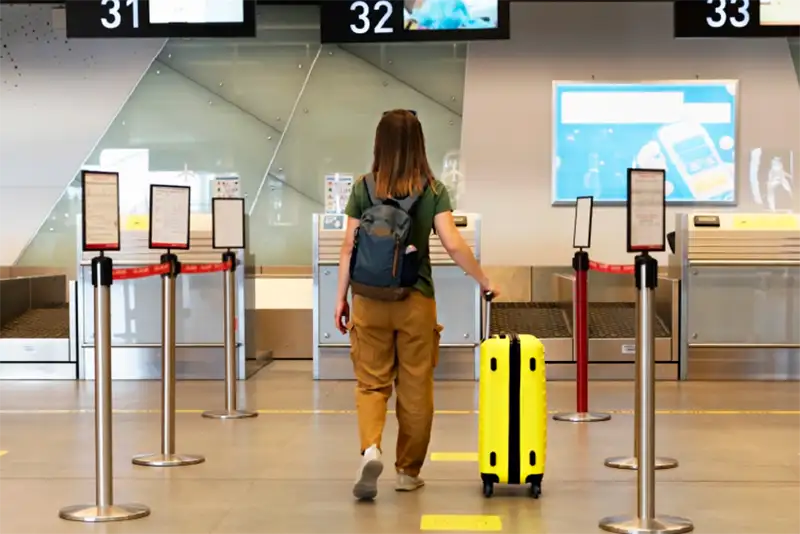Travel opens doors to new experiences, reunites families, and creates lasting memories. But for those living with chronic pain, the thought of sitting on a long flight, navigating a crowded airport, or driving for hours can feel overwhelming. The journey itself often becomes a source of discomfort, turning what should be an exciting trip into a stressful challenge.
At Augusta Pain Center, we understand how pain impacts every part of life, including your ability to enjoy travel. That’s why we’ve created this guide with practical strategies for travel pain relief. Whether you’re managing back pain, arthritis, neuropathy, or another condition, these tips can help you prepare for your journey and minimize discomfort along the way.
Understanding Travel Pain: Why It Gets Worse on the Road
Chronic pain doesn’t take a vacation when you do. In fact, travel often makes symptoms worse because long periods of sitting, standing, or walking can trigger flare-ups. Even small stressors like lifting luggage or waiting in security lines may cause additional pain.
Airplanes and buses have limited space for stretching, while car trips restrict your ability to move freely. When you combine immobility with stress, fatigue, and disrupted routines, discomfort can quickly escalate. Many travelers also report that poor sleep and dehydration add to the problem, making it harder to cope.
Typically travelers experience pain during long trips, with back and joint pain being the most common complaints. While these numbers may sound discouraging, the good news is that most issues can be managed with preparation. By anticipating challenges and planning ahead, you can dramatically reduce the risk of worsening your condition while away from home.
1. Carry Portable Pain Relief Tools
If you rely on aids or comfort items at home, look for travel-friendly versions to bring with you. Collapsible canes, foldable travel chairs, or lightweight lumbar cushions can help support your body on the go. Portable heat wraps, cold packs, or roll-on creams are also easy to pack and can provide fast relief.
These items may not seem significant, but they can prevent minor discomfort from turning into a major issue during your trip. For example, a lumbar cushion on an airplane seat can help reduce pressure on your spine, while disposable heat wraps may keep stiff joints more flexible during colder flights. Having these resources close at hand allows you to manage symptoms before they spiral.
Think of these essentials as your personal travel “toolbox.” Instead of being caught unprepared, you’ll have the supplies you need to handle flare-ups quickly and get back to enjoying your trip. Even small comforts can make a major difference in how you experience travel.
2. Travel Safely with Pain Medications
If you take prescription pain medication or other daily medicines, it is important to plan ahead before leaving home. Medications should always remain in their original containers with your prescription label visible, since TSA agents may request to verify them. Keeping your medication in your carry-on bag also ensures you won’t be stranded without it if your luggage is lost.
It’s wise to bring extra doses in case of travel delays, which are common with both flights and road trips. If you typically use a pill organizer, consider packing it empty and filling it once you arrive at your destination. This avoids unnecessary complications with airport security while still allowing you to stay organized.
You may consider carrying a doctor’s note or a copy of your prescription. While not always required, this documentation adds an extra layer of reassurance and may help in emergencies. Staying on schedule with medication is one of the most effective ways to prevent pain from derailing your trip.
3. Choose Pain-Friendly Hotels
Your accommodations can play a large role in how well you manage chronic pain while away from home. Hotels with hot tubs, saunas, or pools can provide excellent opportunities to relax and ease muscle tension after a day of traveling. Rooms with bathtubs are especially valuable because they allow you to soak and reduce inflammation in joints and muscles.
Calling ahead to explain your needs can make a significant difference. Hotels may be able to place you in accessible rooms, offer upgraded features, or even provide additional amenities at no extra cost. For those with mobility issues, a room near the elevator or on the first floor can also conserve valuable energy.
When staying at resorts or larger properties, ask about shuttles or transportation services on the grounds. Reducing long walks can help prevent unnecessary strain, ensuring you have more energy left for the activities that matter most. Taking these small steps to plan ahead makes your stay more comfortable and less stressful.
4. Airport and Airline Assistance Options
Airports and airplanes can be among the most exhausting parts of travel, but they also offer many accommodations if you know to ask. TSA agents can help passengers who cannot stand for long periods by allowing them to use shorter security lines. Most airports also provide motorized carts to transport travelers from checkpoints to their gates.
Once you arrive at your gate, speak with the airline staff. Gate agents can arrange for early boarding, which allows you more time to get settled without the pressure of crowds. They can also assist with lifting luggage into overhead bins, reducing the risk of injury or flare-ups.
When booking flights, selecting an aisle seat provides easier access for stretching during long journeys. Many airlines will also provide additional pillows or blankets if requested. These small accommodations, while easy to overlook, can significantly reduce discomfort and stress while flying.
5. Plan Your Trip Around Your Limits
One of the best strategies for minimizing travel pain is pacing yourself. Instead of booking a single ten-hour flight, consider splitting your trip with layovers to give your body breaks. Road trips should also include scheduled stops every two or three hours for stretching, walking, and light movement.
At your destination, avoid overscheduling your days. Many travelers try to fit too much into their itinerary, which can leave them drained and in more pain. Planning downtime between activities helps conserve energy and reduces the risk of flare-ups.
It’s also important to remember that travel isn’t about checking every box but about creating meaningful experiences. Choosing quality activities over quantity can keep you comfortable and allow you to enjoy your trip without unnecessary setbacks.
6. Pack Smart with Snacks and Hydration
What you eat and drink during travel has a direct impact on how you feel. Hunger, dehydration, and fatigue increase sensitivity to pain, which is why consistent nutrition is so important. Packing healthy snacks such as fruit, nuts, or protein bars keeps your energy steady and prevents crashes.
Carrying an empty water bottle allows you to refill after passing through security, avoiding the cost of bottled water while staying hydrated. Regular hydration helps prevent stiffness and keeps joints lubricated, making long stretches of sitting more tolerable. Even small sips of water throughout the day can make a big difference in reducing discomfort.
It’s also wise to limit alcohol and caffeine while traveling. Both can increase dehydration and interfere with rest, making pain more difficult to manage. Viewing food and hydration as tools for pain management ensures you are taking proactive steps to care for your body.
7. Accessibility at Destinations
Managing travel pain doesn’t end when you arrive, it continues throughout your trip. Many destinations provide accommodations for visitors with chronic pain or mobility challenges, including wheelchairs, scooters, and escorted tours. Rental car companies often have vehicles with swivel seats or extra legroom, which can make getting in and out easier.
Tour companies also frequently adapt their itineraries to meet the needs of travelers with physical limitations. Calling ahead to ask about these options helps you avoid last-minute complications. Even if accommodations are not publicly advertised, many organizations are willing to make adjustments when asked.
For international travel, research accessibility standards in advance. Not all countries offer the same level of support, and knowing what to expect prevents surprises. With planning, you can make the most of your trip while staying comfortable.
8. Working with a Pain Management Specialist Before You Travel
One of the most effective ways to prepare for a trip is by consulting a pain management specialist. A specialist can suggest stretches or exercises to help manage stiffness during travel, prescribe or adjust medications, and recommend treatments such as joint injections, spinal cord stimulation, or aquatic therapy. These treatments can improve your mobility and make the trip itself more enjoyable.
At Augusta Pain Center, our approach goes beyond treating symptoms. We focus on the whole person, taking into account your daily habits, medical history, and personal goals. This allows us to create a plan that not only addresses pain but also prepares you to manage it more effectively while traveling.
When you partner with our team, you gain access to strategies and resources tailored to your condition. Whether you need short-term adjustments for an upcoming trip or long-term support for chronic pain, we’re here to help you feel more confident on the road.
Which Type of Travel Pain Management Is Right for You?
Not all pain is the same, and no single strategy works for everyone. Some patients may benefit most from adjusting their medications, while others find relief in non-invasive treatments or physical therapy techniques. The important thing is to match the approach to your specific condition, travel plans, and comfort needs.
Spinal cord stimulation, joint injections, and aquatic therapy each address pain differently, and a specialist can determine which option best fits your lifestyle. By tailoring treatment to your unique situation, you are more likely to experience meaningful relief during travel.
The right plan allows you to focus on the joys of your trip instead of being preoccupied with discomfort. Working with a specialist ensures that you have the support and strategies you need before, during, and after your journey.
Frequently Asked Questions About Travel Pain Relief
How can I relieve pain while traveling long distances?
Relief comes from combining preparation with comfort strategies. Portable tools like heat packs and topical gels are helpful, but it’s equally important to schedule breaks, stay hydrated, and move regularly. Consulting with a pain specialist before your trip ensures you have a tailored plan for your specific condition.
Can I bring pain medication on a plane?
Yes, but make sure medications remain in their original prescription bottles and are carried in your hand luggage. TSA allows medically necessary items, though it’s smart to bring documentation from your doctor for added security. Following these steps ensures your travel experience is smoother and less stressful.
Should I see a pain specialist before traveling?
Absolutely. A pain management specialist can adjust your medication, recommend safe stretches and exercises, and provide treatment options that reduce discomfort before your trip. This preparation helps you travel with fewer interruptions from pain and allows you to focus on enjoying your destination.
Getting Started with Pain Relief Support in Augusta, GA
If travel is part of your life, don’t let chronic pain hold you back. With preparation, planning, and expert guidance, you can reduce discomfort and enjoy your journey. Taking small steps now can make a big difference when it comes to staying comfortable and confident while traveling.
At Augusta Pain Center, we’re here to help you travel with less pain and more freedom. From lifestyle guidance to advanced treatments, our team is ready to design a care plan that works for your unique needs and goals. Every patient is different, and we take the time to develop solutions that are personal, practical, and effective.
Request an appointment online today. Don’t wait until your pain interferes with your plans—start preparing now so you can make the most of your upcoming trip.





